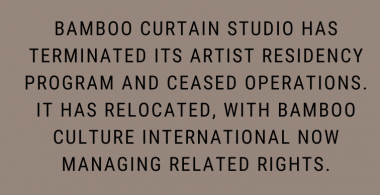- Login to post comments
秋吉台國際藝術村位在日本西南方的山口縣,在設計之初就邀請建築師磯崎新加入,並在1998年落成。藝術村裡面有餐廳、研究室、工作室、藝廊和咖啡廳,是一個完整的藝術村型態,非常適合藝術家在裡面渡過一整天。在7月31日之前,他們開放國際藝術家申請駐村,駐村時間是2013年的1月到3月,名額只有四位,並限制40歲以下才能申請。

Open call for the Akiyoshidai International Art Village Residence Support Program: trans_2012-2013: open to artists under 40 years old. Grants for travel, accommodation and production support for 4 selected international artists in 2013.
The prefix ‘trans’ means to go beyond, get across, cross, exchange, change and convert.The Residence Program provides a time and place for artists to experience new encounters and carry out experiments to guide their their future projects. Participating artists are expected to bring new ideas to the local culture and people while they, in turn, will hopefully acquire new perspectives through these fresh encounters. As a result of the residence program, the artists will convey their new experiences, gathered from the local lifestyle and our particular geographic situation, to their next destination. We hope that the residence program at Akiyoshidai International Art Village becomes a space for artists to go beyond cultural borders and expand their outlooks, exchange their unique understandings and establish relationships with fellow artists.
Residency period: 22 January – 12 March, 2013 [50 days]
Deadline: Applications must be received by 31 July, 2012
Akiyoshidai International Art Village, designed by the architect, Arata Isozaki, was founded in 1998 with the aim of providing a platform for artists in residence as well as for a variety of art forms and cultural activities. AIAV’s main hall has a capacity of approximately 300 and its residence hall can house 100, and the village also features a restaurant, seminar room, studios, gallery, and café.
AIAV is located far away from the noise of everyday city life and is surrounded by natural resources. Isozaki himself referred to it as an “archipelago”, (an expanse of water with many scattered islands), and it consists of many different facilities. The term ‘village’ suggests that AIAV is not a one monolithic structure but rather a collective of small neighboring buildings reminiscent of a traditional Japanese village.

